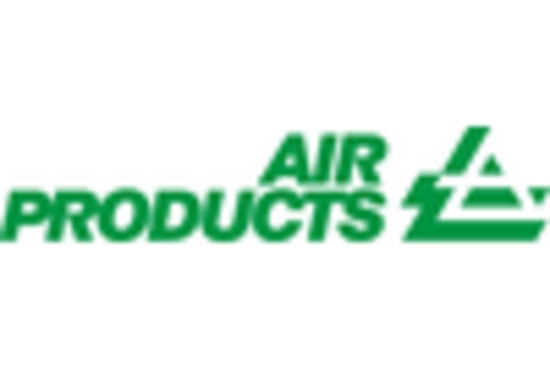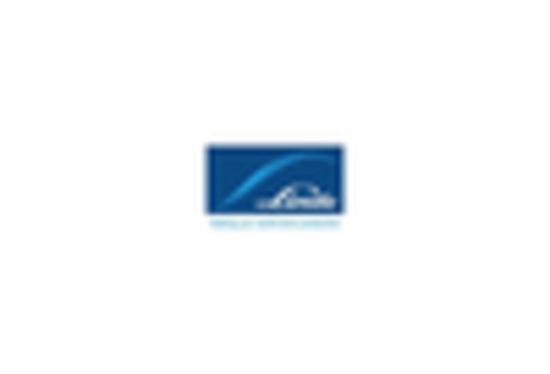Growth of the Frozen Food Sector
The growth of the frozen food sector is significantly impacting the Food Grade Industrial Gases Market. As consumers increasingly opt for frozen meals and snacks due to their convenience and longer shelf life, the demand for food grade gases used in freezing and storage processes is on the rise. Nitrogen and carbon dioxide are commonly employed to prevent freezer burn and maintain product quality. Recent market analyses indicate that the frozen food segment is expected to grow at a rate of 6% annually, further driving the need for food grade gases. This trend presents a promising opportunity for the Food Grade Industrial Gases Market to expand its offerings and cater to the evolving needs of the frozen food market.
Rising Demand for Packaged Foods
The Food Grade Industrial Gases Market is experiencing a notable surge in demand for packaged foods, driven by changing consumer lifestyles and preferences. As more individuals seek convenience, the need for effective preservation methods has become paramount. Food grade gases such as nitrogen and carbon dioxide play a crucial role in extending the shelf life of packaged products. According to recent data, the market for packaged foods is projected to grow at a compound annual growth rate of approximately 4.5% over the next few years. This trend indicates a robust opportunity for the Food Grade Industrial Gases Market, as manufacturers increasingly rely on these gases to maintain product quality and safety during storage and transportation.
Stringent Food Safety Regulations
Stringent food safety regulations are a driving force in the Food Grade Industrial Gases Market. Governments and regulatory bodies are increasingly emphasizing the importance of food safety, leading to heightened scrutiny of food production processes. Food grade gases are essential in ensuring compliance with these regulations, as they help maintain product integrity and safety. The implementation of standards such as HACCP (Hazard Analysis Critical Control Point) necessitates the use of food grade gases in various applications, from packaging to processing. This regulatory landscape creates a favorable environment for the Food Grade Industrial Gases Market, as companies seek to align with safety standards and enhance consumer trust.
Expansion of the Beverage Industry
The Food Grade Industrial Gases Market is significantly influenced by the expansion of the beverage sector, particularly carbonated drinks and alcoholic beverages. The use of carbon dioxide in the carbonation process is essential for enhancing the sensory experience of consumers. Recent statistics suggest that The Food Grade Industrial Gases is expected to reach a valuation of over 1 trillion dollars by 2026, indicating a substantial demand for food grade gases. This growth presents a lucrative opportunity for the Food Grade Industrial Gases Market, as beverage manufacturers increasingly seek reliable suppliers of high-quality gases to ensure product consistency and consumer satisfaction.
Innovations in Food Processing Technologies
Innovations in food processing technologies are reshaping the Food Grade Industrial Gases Market. Advanced techniques such as modified atmosphere packaging (MAP) and cryogenic freezing are gaining traction, allowing for better preservation and quality of food products. These technologies often rely on food grade gases to create optimal environments for food storage and processing. The market for food processing equipment is projected to grow at a rate of 5% annually, suggesting a rising integration of food grade gases in these innovative processes. As manufacturers adopt these technologies, the Food Grade Industrial Gases Market stands to benefit from increased demand for specialized gases tailored to specific applications.

















Leave a Comment